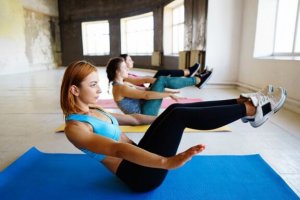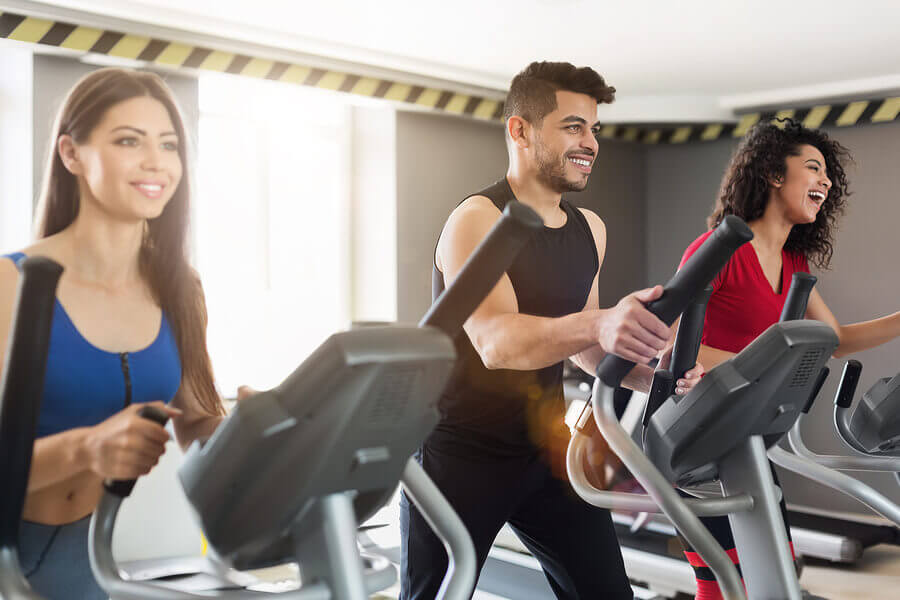7 Exercise Myths

Many people give out exercise advice that isn’t always true. Today in our post, we’re going to go over some exercise myths. Check them out below!
Everyone knows that regular physical activity is essential for health. But, there are some exercise myths out there that keep circulating. Don’t worry, we’ll go over these and clarify them with you today.
Exercise myths
1. Exercise is the best way to lose weight
To start, if you’re someone who enjoys hefty sandwiches, exercise isn’t always the best way to lose weight. Instead, dieting would be the most effective weight loss plan.
You might not be able to burn off all the calories from an unhealthy meal. To add, it’s always easier to eat less than to burn more. In light of this, we recommend combining diet and exercise to meet your exercise goals.
2. You can eat whatever you want if you exercise: exercise myths
A lot of people believe this myth. While exercise is a great way to lose weight, it doesn’t burn off endless calories. Even working out three or four times a week still means you need to follow a healthy diet.
Not everything counts towards your health. Regular physical activity increases your energy expenditure, but, if you also raise your calorie intake, you won’t lose weight and you might actually gain more weight instead.

3. No pain, no gain: exercise myths
This one actually depends more on what your goals are. If you’re exercising to lose weight and burn calories, your workouts shouldn’t reach extremes. But if you’re working out to build muscle mass, some of your exercises will demand a lot from your muscles.
In the latter case, you might feel sore after workouts. If you’re feeling pain or soreness frequently, you should always consult a professional regardless of what your fitness goals are.
If you workout regularly, you won’t always experience muscle soreness after workouts.
4. Abdominal muscles make fat disappear
Unfortunately, this one isn’t entirely true. Your body doesn’t zap away fat just because you’re working out a specific area. Ab workouts will define the area, but the fat won’t disappear. So, hold off on your ab exercises for a second and start burning fat.
In no way does this mean that ab workouts aren’t important. But you need to combine them with endurance, strength and cardio training. As we mentioned earlier, your best bet for weight loss is a plan with cardio and a diet.

5. Body fat can turn into muscle
This is another popular myth. Fat and muscle are two completely different elements. Muscles are tissues that link together and fat just spreads throughout the whole body.
Consequently, you can’t convert one into the other and you can’t technically eliminate fat cells either. Instead, you can reduce their size and sculpt your body by strengthening your muscles.
6. Elliptical machines don’t work: exercise myths
Compared to treadmills or running outside, elliptical machines put less pressure on your joints but that doesn’t mean less of a workout. As with any cardio machine, your workout quality actually depends on how much effort you put into it.

7. Working out every day isn’t healthy
Lastly, you need to know that this belief is just a myth– it all depends on the intensity of your workout. Your body is designed to send out warning signals when something isn’t right.
But of course, exercising excessively will lead your body to fatigue, which in turn, will require ample rest in order to stay healthy. In light of that, we recommend including different kinds of workouts in your plan.
There are so many exercise myths out there. Now you know seven myths that you should never dwell on again.
Many people give out exercise advice that isn’t always true. Today in our post, we’re going to go over some exercise myths. Check them out below!
Everyone knows that regular physical activity is essential for health. But, there are some exercise myths out there that keep circulating. Don’t worry, we’ll go over these and clarify them with you today.
Exercise myths
1. Exercise is the best way to lose weight
To start, if you’re someone who enjoys hefty sandwiches, exercise isn’t always the best way to lose weight. Instead, dieting would be the most effective weight loss plan.
You might not be able to burn off all the calories from an unhealthy meal. To add, it’s always easier to eat less than to burn more. In light of this, we recommend combining diet and exercise to meet your exercise goals.
2. You can eat whatever you want if you exercise: exercise myths
A lot of people believe this myth. While exercise is a great way to lose weight, it doesn’t burn off endless calories. Even working out three or four times a week still means you need to follow a healthy diet.
Not everything counts towards your health. Regular physical activity increases your energy expenditure, but, if you also raise your calorie intake, you won’t lose weight and you might actually gain more weight instead.

3. No pain, no gain: exercise myths
This one actually depends more on what your goals are. If you’re exercising to lose weight and burn calories, your workouts shouldn’t reach extremes. But if you’re working out to build muscle mass, some of your exercises will demand a lot from your muscles.
In the latter case, you might feel sore after workouts. If you’re feeling pain or soreness frequently, you should always consult a professional regardless of what your fitness goals are.
If you workout regularly, you won’t always experience muscle soreness after workouts.
4. Abdominal muscles make fat disappear
Unfortunately, this one isn’t entirely true. Your body doesn’t zap away fat just because you’re working out a specific area. Ab workouts will define the area, but the fat won’t disappear. So, hold off on your ab exercises for a second and start burning fat.
In no way does this mean that ab workouts aren’t important. But you need to combine them with endurance, strength and cardio training. As we mentioned earlier, your best bet for weight loss is a plan with cardio and a diet.

5. Body fat can turn into muscle
This is another popular myth. Fat and muscle are two completely different elements. Muscles are tissues that link together and fat just spreads throughout the whole body.
Consequently, you can’t convert one into the other and you can’t technically eliminate fat cells either. Instead, you can reduce their size and sculpt your body by strengthening your muscles.
6. Elliptical machines don’t work: exercise myths
Compared to treadmills or running outside, elliptical machines put less pressure on your joints but that doesn’t mean less of a workout. As with any cardio machine, your workout quality actually depends on how much effort you put into it.

7. Working out every day isn’t healthy
Lastly, you need to know that this belief is just a myth– it all depends on the intensity of your workout. Your body is designed to send out warning signals when something isn’t right.
But of course, exercising excessively will lead your body to fatigue, which in turn, will require ample rest in order to stay healthy. In light of that, we recommend including different kinds of workouts in your plan.
There are so many exercise myths out there. Now you know seven myths that you should never dwell on again.
All cited sources were thoroughly reviewed by our team to ensure their quality, reliability, currency, and validity. The bibliography of this article was considered reliable and of academic or scientific accuracy.
- Zemkova, E. (2014). Sport-specific balance. Sports Medicine, 44(5), 579–590. https://doi.org/10.1007/s40279-013-0130-1
-
Smith, B. (2018). Generalizability in qualitative research: misunderstandings, opportunities and recommendations for the sport and exercise sciences. Qualitative Research in Sport, Exercise and Health, 10(1), 137–149. https://doi.org/10.1080/2159676X.2017.1393221
This text is provided for informational purposes only and does not replace consultation with a professional. If in doubt, consult your specialist.








